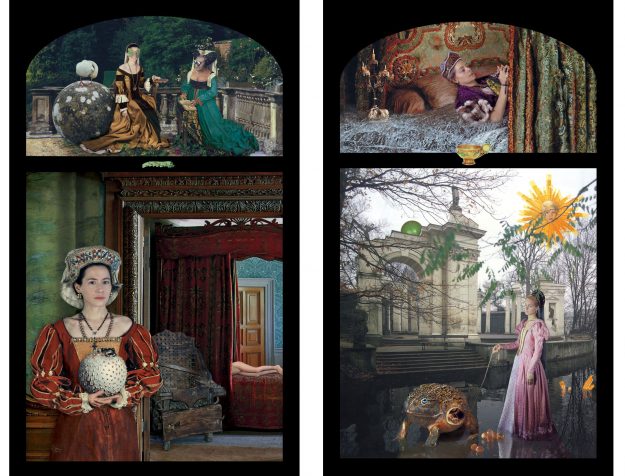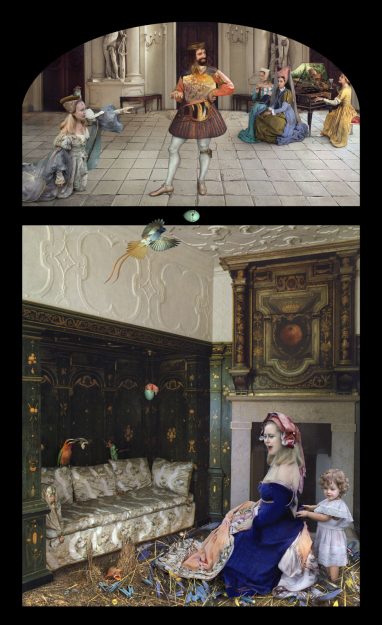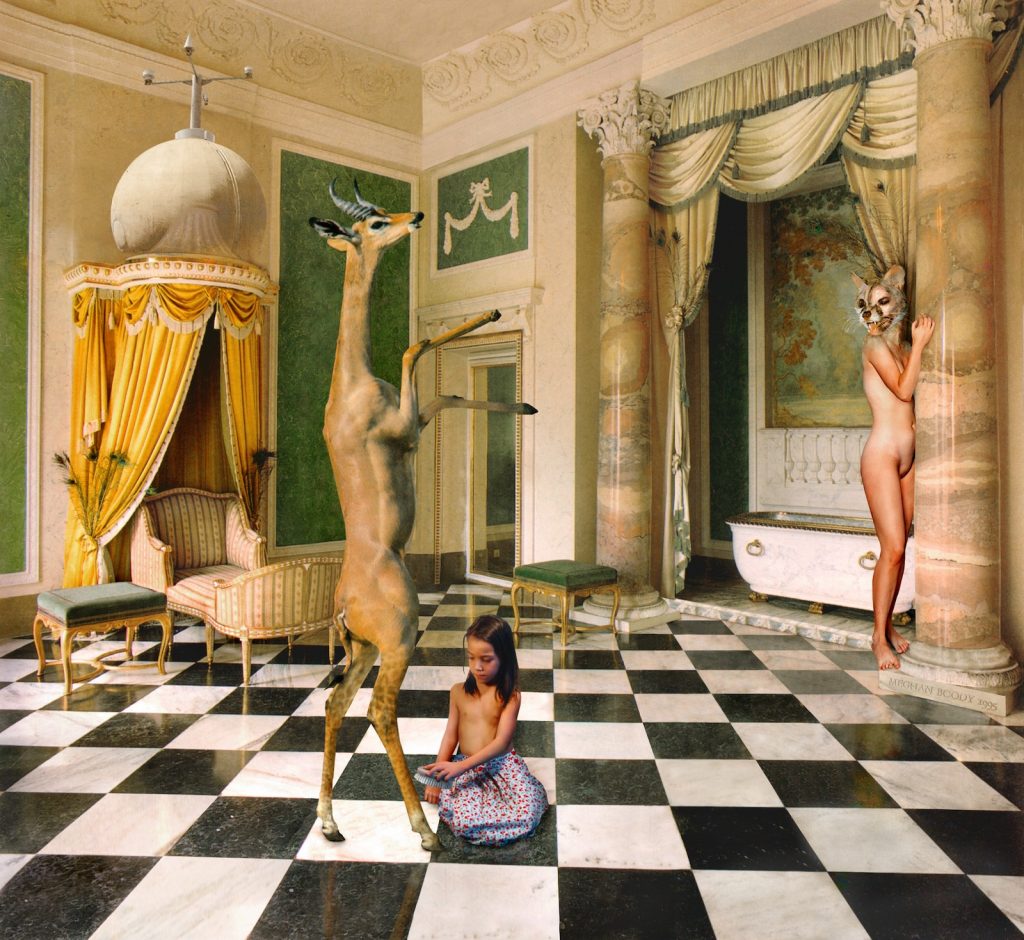I have yet to experience a story. I think stories are actually lies. But they are incredibly important to our survival.
—Wim Wenders, “Impossible Stories”
We’re all storytellers, and yet all of our stories are untrue. The German filmmaker Wim Wenders has no particular interest in Buddhism, or none that I know of. His essay “Impossible Stories” is a reflection on his own creative process as a visual artist. It’s also an unflinchingly honest and direct expression of the tensions and complications presented by our natural inclination to tell stories, which makes his reflections particularly apt for dharma practitioners. My own engagement with Buddhist practice has been plagued for years by confusions and difficulties around the issue of the stories we tell, so Wenders’ account of his struggle to come to terms with stories as a filmmaker speaks clearly and powerfully to my experience and also helps to point the way toward a resolution of these difficulties.
There’s a clear parallel between filmmaking as Wenders describes it and the experience of meditation. As a filmmaker, Wenders explains, his real interest is not in stories but in images; his essay speaks of his abiding love of and fascination with images. An image for Wenders is simply something as it appears before his eye or before his camera: a city street, for example, or a train going down the track. An image has no particular meaning, and it doesn’t need one; it’s not going anywhere, not leading to anything. It’s sufficient unto itself. In the same way that Wenders is most interested in the image before it’s pressed into the service of a story, during meditation we attend to the raw stuff of our immediate experience as it presents itself to our senses, before integrating it into our ongoing narratives about ourselves and the world.
Yet Wenders goes on to reflect on how something within us seems to be constantly looking beyond the images, organizing them into meaningful narratives, whether we consciously intend to or not. As much as he may wish to simply show images, narrative intrudes; juxtapositions of images create narrative expectations, and the images structure themselves into a story that progresses through time.
Buddhist teachings are often presented in a way that supports our rejection of our stories as lies. The teachings on anatta [non-self, or the inessential nature of things] are read, rightly or wrongly, as an injunction to see through the common-sense idea of the self extended through time past and time future—the narrative self. “Don’t believe your stories,” say our meditation teachers. “You are not your stories.”
During meditation we discover that what we think of as our stories are in fact series of images. Mixed in among all the images of sights, sounds, sensations, thoughts, and feelings that constitute my experience in meditation, however, there are memories and thoughts of the future. There are three things we notice about these memories and thoughts of the future. First, we notice that they, like everything else, are occurring right now. Second, we notice that—like Wenders’s images—they don’t seem content to simply abide in theright now; they want to combine into ever more complex narrative structures, with a sense of movement through linear time. Third, we notice that these stories are so convincing, so absorbing, so seductively lifelike, that right up until this very moment on the cushion we’d always believed that they were the reality of our lives. But we can only ever experience what is right now. Just as Wenders says, I have yet to directly experience a story as it unfolds in time, and, very clearly, I never will.
When we’re actually sitting on the cushion, this insight can feel like a merciful release from the burdensome need to recite and rehearse and reinterpret the story of “This is who I am, where I’m going, and why.” However, when the sitting is over and we reflect on this experience, we find it unsettling. We become aware that the stories we tell ourselves about ourselves are inventions, constantly subject to revision, not solid realities we can experience. At worst, stories start to look treacherous, deceitful, like lies. Wenders writes:
I totally reject stories, because for me they only bring out lies, nothing but lies, and the biggest lie is that they show coherence where there is none.
We might view Buddhist awakening, then, as seeing through the lies of stories. Enlightenment is a flight from the shifting, anxious, fundamentally dishonest ground of stories and the historical, linear narrative sense of time, to the pure wholehearted honesty of the eternal now, where thoughts and sensations just rise and fall without needing to mean anything beyond themselves, and we are free to be nobody, going nowhere.
Wenders, however, doesn’t stop at saying that stories are lies—he also declares that they are “incredibly important to our survival.” He expands on this:
People’s primary requirement is that some kind of coherence be provided. Stories give people the feeling that there is meaning, that there is ultimately an order lurking behind the incredible confusion of appearances and phenomena that surrounds them.
The illusory nature of our stories can be liberating, but this sense of liberation generally doesn’t last much longer than a sitting. Perhaps some people—monks who submit their entire lives to rigid structure, for example—are able to live an entire life in this storyless state, but I seriously doubt it. I say this with no other authority than simply my own experience as a practitioner, which has demonstrated that the attempt to live in the world without a story doesn’t lead to any lasting kind of liberation. On the contrary, it cuts us off from our hopes for the future and our plans to realize them, our sense of belonging to a family and community, our relationships rooted in shared history, our understanding of our particular capacities and how we can develop them, our weaknesses and how we can shore them up, our motivation, our sense of purpose in life. Rather than liberation, storylessness leads to alienation, meaninglessness, and depression.

So on the one hand our stories are lies, and on the other hand they’re incredibly important for our survival. As a practitioner, what should I do? Should I give in to this chronic need to tell myself stories, and thus abandon the Buddha’s teaching and everything I’ve found in meditation to be most honest and true in my own experience? Or should I carry on trying to use my practice to erase my stories about myself, even though this seems futile and isn’t bringing anything except disconnection and despair?
The key to answering these questions is reworking our definition of story. In his reflections on his craft, Aspects of the Novel, E. M. Forster makes a distinction between a story and a plot:
A story is a narrative of events arranged in their time sequence. A plot is also a narrative of events, the emphasis falling on causality. “The king died, and then the queen died” is a story. “The king died and the queen died of grief ” is a plot. . . . Consider the death of the queen. If it is in a story, we say “and then?” If it is in a plot, we ask “why?”

Surely, few of us have ever doubted what Forster would call our story, or ever felt that we were being called by our dharma teachers to doubt it. Meditation and teachings don’t lead us to doubt the sheer facts that we were born in a particular time and place, went to school, went to work or university or travel, and the rest. What the experience of meditation calls into question, and what some of the teachers seem to be asking us to doubt, is the plot—the sense that these events are linked up into a meaningful sequence with a beginning, middle, and an end. “Don’t believe your stories” seems to me to mean precisely this: Don’t believe the plot. Don’t believe your mind when it structures the brute stuff of the events in your life into a meaningful, coherent sequence with a protagonist at its center, struggling with problems, successes, and failures, influencing and being influenced by events, moving meaningfully from past to future in a narrative arc.
Crucially, Forster points out that causality lies behind this structuring of events into plots. We arrange our lives into stories by positing causal relationships between the things that happen to us. And, as Western philosophers like David Hume and Immanuel Kant have been pointing out since the eighteenth century, causality is not present in the world as we perceive it directly with our senses; it’s a structure we apply when we think about what we’re seeing and make sense of it. We might go further and say that causality is a tool of the storyteller’s art.
This is the point at which we can reconcile the dharma with the stories. The Buddha put causality (paticca-samupada, conditionality, dependent co-arising) right at the center of his teaching.
Whoever sees dependent co-arising sees the dhamma; whoever sees the dhamma sees dependent co-arising.(Majjhima Nikaya 28)
Causality, in other words, is not something to be discarded. On the contrary, it seems to be the key point of the Buddha’s message. Where there is causality, there is narrative, and where there is narrative there is causality—so clearly the narrative understanding of things has a place within this practice of ours after all.
The sense of nagging inauthenticity about my narrative self—the sense that when it comes down to it my story is a lie—persists, and one of the great joys of meditation is that it offers an opportunity to put the story aside for a while and abide, albeit briefly, in the images. But my own experience tells me that the attempt to live my day-to-day life without stories about who I am is quixotic and destructive. I’m relieved by the thought that the Buddha’s own emphasis on causality accommodates my stubborn need for a story, and seems to confirm the intuition I share with Wenders that I can’t and shouldn’t try to avoid being somebody, going somewhere.
Thank you for subscribing to Tricycle! As a nonprofit, we depend on readers like you to keep Buddhist teachings and practices widely available.
